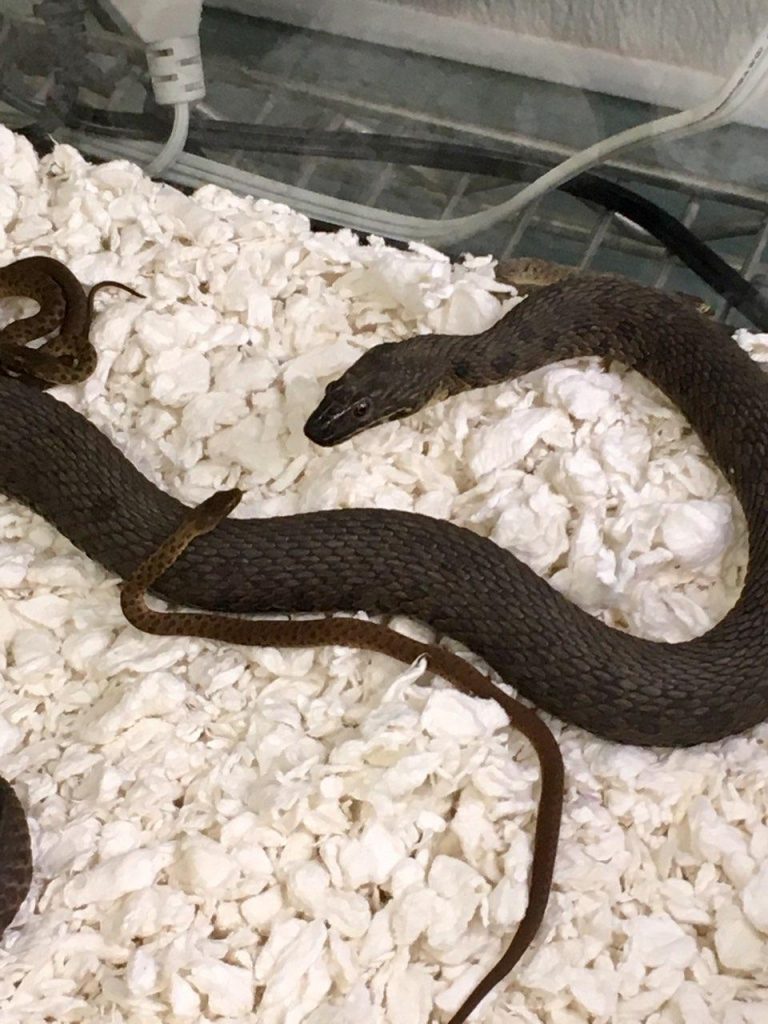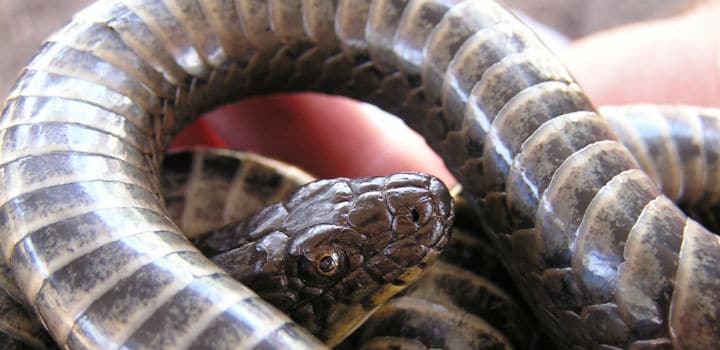Nov. 21, 2019
Gartersnakes in Arizona have been classified as a threatened species since 2014. This year, student researchers at Northern Arizona University found another threat facing them.
In collaboration with Matthew Allender’s lab at the University of Illinois’ Wildlife Epidemiology Laboratory and led by herpetologist Erika Nowak, the students documented the first evidence of snake fungal disease in wild snakes in Arizona. This disease, an emerging disease specific to snakes, is caused by the fungal pathogen Ophidiomyces ophidiicola. It invades the skin of snakes, causing lesions, and can cause death in affected snakes.
These findings have significant implications both for wild snakes in Arizona, including the threatened gartersnakes, rattlesnakes and other native species, as well as for the release of 38 narrow-headed gartersnakes born in captivity as part of NAU’s captive breeding facility, which Nowak, an assistant research professor in the School of Earth and Sustainability and Department of Biological Sciences, oversees.
“I have concerns that this disease could affect rattlesnake species that hibernate in communal dens at higher elevation, as it has with similar species in northeastern U.S. states,” she said. “We have started collecting samples from some of these populations in Arizona, and continued monitoring of populations—and education of researchers, recreational herpetologists and others visiting these dens—will be important to identify disease presence and prevent its spread should it eventually show up in Arizona rattlesnakes.”
Current and former graduate students Kayla Lauger, Iain Emmons and Rex Bergamini, along with current and former undergraduate students Hannah Wilson, Cassidy Klovanish, Bryan Carlin and Karina Cocks and Basis Flagstaff student Danna Du collected skin swabs from more than 60 wild snakes in northern Arizona, including the federally threatened narrow-headed gartersnakes, which are only found in Oak Creek Canyon and one or two other areas nationwide. Allender and his team tested the swabs and determined two snakes were positive for the disease: one juvenile narrow-headed gartersnake and one adult Sonoran mountain kingsnake.
The research raised other questions as well, as neither affected snake had symptoms typically associated with the disease. The findings are worrisome—but exactly how worrisome, even the researchers don’t know yet.

“The impact of this disease on native populations is unknown, but significant impacts have been observed in threatened populations of timber rattlesnakes and eastern massasaugas on the East Coast and in the Midwest,” Allender said. “It is certainly possible that some mortality may occur, but follow-up studies are needed to truly determine if this is a conservation threat.”
Snake fungal disease was initially reported in Illinois and New Hampshire in 2008; it’s since been observed in 30 states. The disease-causing fungus is similar to the fungus that causes white-nose syndrome, which has killed millions of bats throughout the United States in the last 15 years. Researchers can’t say if this disease has a similar migration pattern and thus far appears to be less deadly to snakes. Of course, with the gartersnake population already being so small, any threat is a concern. Additionally, Allender said any factor that changes an ecosystem has effects that we may not realize until they’ve already occurred.
The next big question is the effect this discovery will have on the gartersnakes being raised in captivity with the intent to release them into the wild. Knowing this fungus is present in Arizona changes the calculations that go into that decision.
“Release of headstarted individuals should always be done with care, but in cases where disease may play a role, it should be done judiciously,” Allender said. “We wouldn’t want our efforts to be thwarted by a disease that can potentially kill all released snakes. Furthermore, we wouldn’t want to release carrier animals that could infect wild individuals.”
The researchers will discuss various plans and responsibly assess the risk and benefit of release programs to maintain the overall goal of conserving the species, though Nowak said they are optimistic that a variety of options remain open to them.

Heidi Toth | NAU Communications
(928) 523-8737 | heidi.toth@nau.edu



